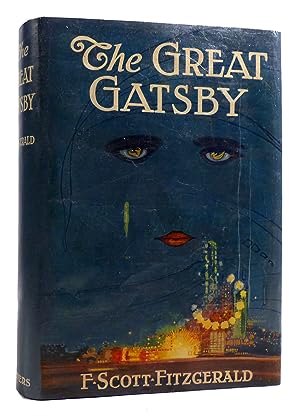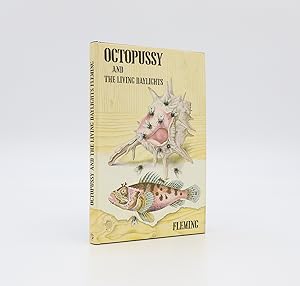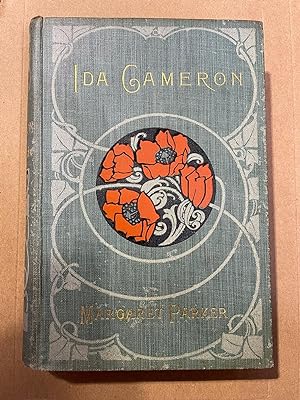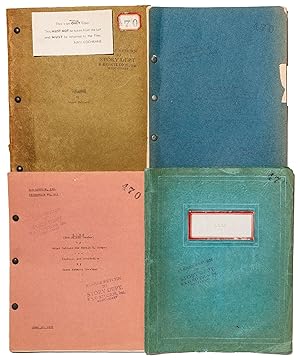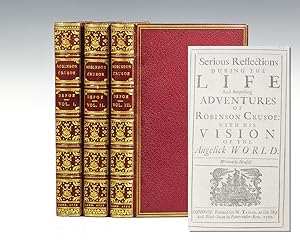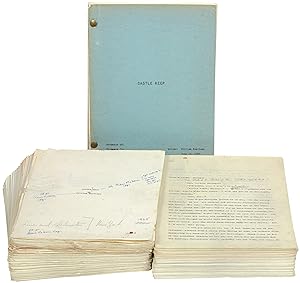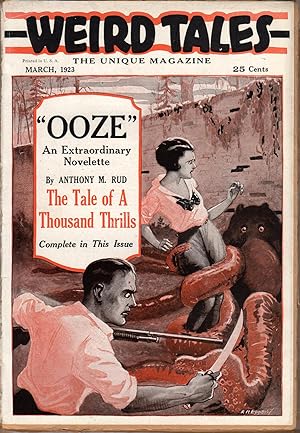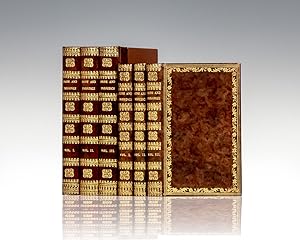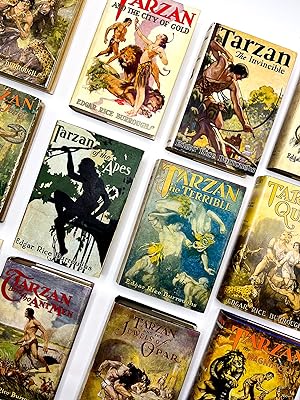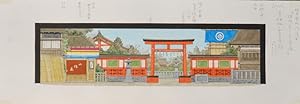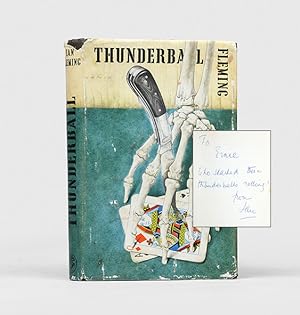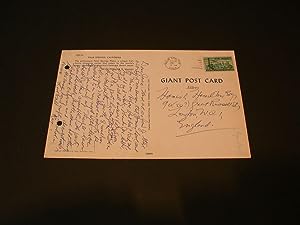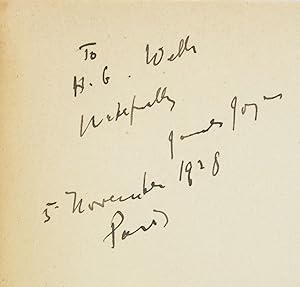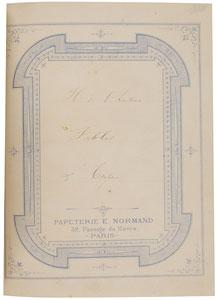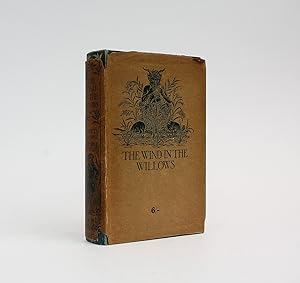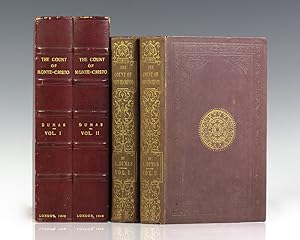fiction, Ancien ou d'occasion (Plus de 1 230 000 résultats)
Type d'article
- Tous les types d'articles
- Livres (1 211 189)
- Magazines & Périodiques (19 917)
- Bandes dessinées (2 528)
- Partitions de musique (37)
- Art, Affiches et Gravures (750)
- Photographies (176)
- Cartes (139)
-
Manuscrits &
Papiers anciens (1 511)
Etat
- Tous
- Neuf
- Ancien ou d'occasion
Reliure
Particularités
- Edition originale (489 580)
- Signé (103 458)
- Jaquette (379 061)
- Avec images
- Sans impression à la demande (1 236 124)
Livraison gratuite
Pays
Evaluation du vendeur
-
Harry Potter and the Philosopherâ s Stone.
Edité par Bloomsbury, London, 1997
Vendeur : Raptis Rare Books, Palm Beach, FL, Etats-Unis
Edition originale Signé
First edition, first printing of the rarest book in the Harry Potter series, a cornerstone of young adult literature, and one of the best-selling books of all time. First printing with "First published in Great Britain in 1997", the full number line "10 9 8 7 6 5 4 3 2 1", "Joanne Rowling" for "J.K. Rowling", and "Thomas Taylor1997" (lacking the space) on the copyright page and "1 wand" listed twice (as the first item and last item) on the "Other Equipment" list on page 53. Octavo, original laminated pictorial boards, without a dust jacket as issued. Association copy, inscribed by the author on the dedication page, "to Bryony - who is the most important person I've ever met in a signing queue & the first person ever to see merit in Harry Potter. With huge [underlined 4 times] thanks. J.K. Rowling." Additionally signed and with a large original drawing by cover illustrator Thomas Taylor. The recipient, Bryony Evens was one of the first people to read the opening chapters of Harry Potter and the Philosopher's Stone, the first to recognize the workâ s inherent value, and perhaps the most instrumental figure in getting the book published. Working at the time at Christopher Little Literary Agency in Scotland, Evens was the first point of contact in receiving and sorting unsolicited manuscripts. Evens read Rowlingâ s submission of the first three chapters of the book and passed it along to Little, who approved that she obtain the full manuscript and promote it to suitable publishers. Given a small budget, Evens was only able to print three manuscripts to pitch to publishing houses and, after twelve months and twelve rejections, was finally given the green light by editor Barry Cunningham from Bloomsbury in London. Bloomsbury published the book on June 26, 1997. A year later, Bryony attended a Harry Potter book signing event where Rowling received her with open arms and warmly inscribed the present volume. Rowling was working as a researcher and bilingual secretary for Amnesty International in 1990 when she conceived the idea for the Harry Potter series while on a delayed train from Manchester to London. The seven-year period that followed saw the death of her mother, birth of her first child, divorce from her first husband, and relative poverty. A true "rags to riches" story, the publication of the present volume would bring her from living on benefits to billionaire status. She was named the world's first billionaire author by Forbes in 2014 and the Harry Potter series has become the best-selling book series of all time. In near fine condition with a touch of rubbing to the extremities. At the time of the bookâ s publication in 1996, illustrator Thomas Taylor had just graduated from art school and was working at Heffers Childrenâ s Bookshop in Cambridge. At Heffers, Taylor educated himself on the childrenâ s book market and its major publishers and decided to submit a portfolio of his illustrations to the offices of Bloomsbury Publishing, including several drawings of dragons and wizards. Taylor heard back from Bloomsburyâ s editor, Barry Cunningham (who had recently decided to take a chance on publishing Harry Potter and the Philosopherâ s Stone after it had been rejected by twelve other publishers) almost immediately. Cunningham phoned him at Heffers and asked if he could create a design for the cover of a relatively unknown authorâ s first book about a schoolboy wizard. He sent Taylor an incomplete manuscript of the book and, after two days, Taylor had a final product: a watercolor painting of a young Harry Potter with his lightning-bolt scar standing next to the Hogwarts Express on Platform Nine and Three-Quarters. Only 500 copies of the first printing were published, 300 of which were distributed directly to libraries. Housed in a custom half morocco clamshell box made by the Harcourt Bindery. An exceptional association and effusive inscription to the person who first recognized the value of Harry Potter. The first novel in the Harry Potter series and Rowling's debut novel, Harry Potter and the Philosopher's Stone follows Harry Potter, a young wizard who discovers his magical heritage on his eleventh birthday when he receives a letter of acceptance to Hogwarts School of Witchcraft and Wizardry. The book was first published in the United Kingdom on June 26, 1997 by Bloomsbury and in the United States the following year by Scholastic Corporation under the title Harry Potter and the Sorcerer's Stone. The book reached the top of the New York Times list of best-selling fiction in August 1999 and stayed near the top of that list for much of 1999 and 2000. It has sold in excess of 120 million copies, making it one of the best-selling books of all time. The majority of reviews of the popular book were favorable, revering Rowling's imagination, humor, simple, direct style and clever plot construction. Rowling's style has been compared to that of Jane Austen (her favorite author), Roald Dahl (whose works dominated children's stories before the appearance of Harry Potter), and even the Ancient Greek story-teller Homer. The first book in the series was followed by six sequels published on an annual basis between 1997 and 2000. The series has sold more that 500 million copies worldwide and has been â translated into 80 languages, â making it the best-selling book series in history and among history's most translated literary works.â The last four books in the series consecutively set records as the fastest-selling books of all time, where the final installment, Harry Potter and the Deathly Hallows, sold roughly fifteen million copies worldwide within twenty-four hours of its release. With twelve million books printed in the first U.S. run, it also holds the record for the highest initial print run for any book in history. Harry Potter and the Philosopher's Stone was adapted into the 2001 fantasy film of the same name directed by Chris Columbus, distributed by Warner Bros. Pictures, and st.
-
Mars and the Imagination: A Record of Our Relationship with the Red Planet
Vendeur : Manhattan Rare Book Company, ABAA, ILAB, New York, NY, Etats-Unis
Etat : Very Good. Mars and the Imagination: A monumental and carefully curated collection of over 900 works of both fiction and non-fiction tracing the history of our understanding and obsession with the Red Planet. To begin exploring the collection, please see our description available on this page under "View the Collection". Background Mars and the Imagination was conceived and assembled by the experienced collector David Wenner - whose comprehensive collection on the history of physics now resides at the Niels Bohr Library of the American Institute of Physics - and represents much more than a "collection" of works. Through his years of research and study, Wenner was able to unearth important and previously unrecognized literary and historical texts, making new connections among them. Contextualized in such a way, the items in Mars and the Imagination collectively tell an illuminating story through primary sources that to our knowledge has not been previously attempted. It is the story of our fascination with the Red Planet, a story of our wonder about something that is just out of reach, a story that has revealed as much about us as it has about Mars. Fiction and Non-Fiction For hundreds of years, Mars has been observed by scientists, but lurked tantalizingly on the edge of our ability to truly understand the nature of the planet. It thus became a perfect template for speculation: What are the conditions on Mars? Is it hospitable to life? Are there, or have there ever been, living beings on Mars and if so, are they like us? Superior to us? Threatening to us? Will we ever be able to visit Mars? The approaches to answering these questions have been varied, with both scientific inquiry and imaginative fiction in a continual dialogue of influence on each other. Mars and the Imagination, therefore includes texts by such scientific giants such as Kepler, Huygens, Hooke, and Cassini, but also fiction by literary masters such as Swift, Wells, Asimov, Bradbury, and Clarke. Different Formats, Different Audiences: A Vision of Mars for All The collection includes many specialist textbooks and journal articles written by scientists for fellow scientists, but it striking to witness how discussions of Mars seeped into the public consciousness of each generation. There are many papers from esteemed scientific journals such as Philosophical Transactions of the Royal Society, Comptes Rendus or Nature, but Mars is represented just as thoroughly in more popular publications such as The New Yorker, National Geographic, Life Magazine, and even Playboy. It seemed, at times, that all society had a keen interest in news and speculation about Mars. The collection reflects this - seeing different formats and genres from the same period next to each other underscores the point that wonder about Mars has been part of the zeitgeist of each era, including our own. Rescuing Primary Sources and Preserving the Ephemeral One of the strengths of the collection is the preservation of essential primary source material that might otherwise be lost. Many of the items were published in ephemeral formats such as journals, magazines, or as pulp fiction. They were not designed to last and are extremely difficult to find in collectible condition today. Similarly, many of the more scholarly scientific works were published for a small audience of peers and never existed in large numbers. Mars and the Imagination provides a unique opportunity to see these primary sources in one place, and preserves them for future generations. Beautifully Presented and Exhibit-Ready Most of the items in Mars and the Imagination are safely housed in beautiful custom boxes, with the contents often grouped together by themes and carefully labeled. Thus, the collection is attractively presented and easy to navigate, serving not only as a working library for study and enjoyment, but as an exhibit-ready collection. For a more detailed exhibition of highlights form the collection, please click on the attached P.
-
The Road To Serfdom.
Edité par Routledge & Sons, London, 1944
Vendeur : Raptis Rare Books, Palm Beach, FL, Etats-Unis
Edition originale Signé
First edition of one of the most influential and popular expositions of classical liberalism ever published. Octavo, original black cloth. Association copy, inscribed by the author on the front free endpaper, "To Dr Karl Popper a fellow struggler for freedom with friendly greetings from F.H. Hayek." Also included is a letter signed by Karl Popper to his assistant Melitta Mew, presenting her with this book as a birthday gift (".It is the copy he sent me to New Zealand on publication of the book, with a beautiful dedication. And thank you for everything you are doing for my work (and me). Karl"), on his stationery of 136 Welcomes Road, Kenley, Surrey, and dated 23 January 1994. While this book was very special to Popper, he had been diagnosed with cancer and passed away from complications in September. Ms. Mew helped to put together Popper's lectures and essays in a book, which was published in 1996: "In search of a better world : lectures and essays from thirty years." Easily the best association copy in existence, as the lives of both of these great economists, Fredrich von Hayek (1899-1992) and Karl Popper (1902-1994) greatly impacted the other and their lives were intertwined. They both experienced the destruction of their Bourgeois Viennese families' savings by hyperinflation due to the fragility of the liberal society. While both men studied at the University of Vienna, they first met in London in 1935. Hayek was at that time employed at the London School of Economics and Popper was in the city on a visiting lectureship. While Popper accepted a position in New Zealand, where he was to remain until after World War II, he would also later assume a chair at the LSE, due to Hayek's influence there. Near fine in a good dust jacket. The British edition (which this example is) was published in March of 1944, preceding its American counterpart, which was published later that same year in September. Housed in a custom half morocco clamshell box. "Hayek has written one of the most important books of our generation. It restates for our time the issue between liberty and authority with the power and rigor of reasoning that John Stuart Mill stated in his great essay, On Liberty " (Hazlitt, 82). Its arguments against economic control by the government inspired many politicians and economists. John Maynard Keynes has been quoted as saying, "[I]n my opinion it is a grand book. . . . Morally and philosophically I find myself in agreement with virtually the whole of it: and not only in agreement with it, but in deeply moved agreement." While the Road To Serfdom placed fourth on the list of the 100 best non-fiction books of the twentieth century by National Review magazine, it was not as popular at the time of its writing, and Karl Popper was one of Hayek's few intellectual allies. He shared many of Hayek's views and Hayek even read the manuscript of Popper's own work, The Open Society and Its Enemies, prior to his publication of this book.
-
Green Hills of Africa [Presentation copy inscribed by Ernest Hemingway to his first wife Hadley Hemingway and his son Jack]
Edité par Charles Scribner's Sons, 1935
Edition originale Signé
Hardcover. Etat : Very Good. Etat de la jaquette : Very Good. First Edition. ONE OF THE MOST IMPORTANT HEMINGWAY PRESENTATION COPIES EVER OFFERED FOR SALE: Inscribed by Ernest Hemingway to Hadley Hemingway and his son Jack (Bumby), on the dedication page, as Hemingway expands the printed dedication ('To Philip, to Charles, and to Sully') . Hemingway's continuing inscription, entirely in his hand in black ink, reads: 'also to Hadley and Paul and to Bumby with much love from Pauline, Ernest, Patrick. and Gregory, and all of Africa. The lion enclosed under separate cover is the same lion Pauline almost shot on page 40.' To our knowledge, this is the only presentation copy from Ernest to Hadley ever to come on the market. First edition, first printing of this classic Hemingway. Original black cloth stamped in gilt, in original jacket (jacket has a large chip to 'T' in title on spine extending to rear cover, with some other nicks and tears and tape repairs to verso; book has some minor fading in spots and light edge wear). Hanneman A10A (Scribner's seal and 'A' on title page verso; jacket complete with $3.50 price). Color frontispiece by Juan Gris; 81 b/w 'action photographs' on plates. 1 color & 81 b/w Illustrations. Hadley Richardson Hemingway, later Hadley Mowrer (1891-1979), first wife of Ernest Hemingway. As Hemingway later said, Hadley was Ernest Hemingway's greatest and truest love, the woman he betrayed to his everlasting regret. The subject of the recent 'The Paris Wife', she is a figure of enduring public interest. She married a second time, to Pulitzer Prize-winning journalist Paul Mowrer in 1933, two years before this work was published. We have firm provenance for this book. The true first printing of the first edition in original jacket (green cloth binding has usual fading to spine and edges; minor wear; jacket has fading, nicks and wear from use). Hanneman A13A; with 'A' and Scribner's seal on title page verso. Decorations by Edward Shenton. [8],294,[1] pages.
-
Harry Potter and the Philosopherâ s Stone.
Edité par Bloomsbury, London, 1997
Vendeur : Raptis Rare Books, Palm Beach, FL, Etats-Unis
Edition originale Signé
First edition, first printing of the rarest book in the Harry Potter series, a cornerstone of young adult literature, and one of the best-selling books of all time. First printing with â First published in Great Britain in 1997â , the full number line â 10 9 8 7 6 5 4 3 2 1â , â Joanne Rowlingâ for â J.K. Rowlingâ , and â Thomas Taylor1997â (lacking the space) on the copyright page and â 1 wandâ listed twice (as the first item and last item) on the â Other Equipmentâ list on page 53. Octavo, original illustrated boards, without a dust jacket as issued. In fine condition. With an original illustration by cover artist Thomas Taylor of Harry Potter on the dedication page. At the time of the bookâ s publication in 1996, illustrator Thomas Taylor had just graduated from art school and was working at Heffers Childrenâ s Bookshop in Cambridge. At Heffers, Taylor educated himself on the childrenâ s book market and its major publishers and decided to submit a portfolio of his illustrations to the offices of Bloomsbury Publishing, including several drawings of dragons and wizards. Taylor heard back from Bloomsburyâ s editor, Barry Cunningham (who had recently decided to take a chance on publishing Harry Potter and the Philosopherâ s Stone after it had been rejected by twelve other publishers) almost immediately. Cunningham phoned him at Heffers and asked if he could create a design for the cover of a relatively unknown authorâ s first book about a schoolboy wizard. He sent Taylor an incomplete manuscript of the book and, after two days, Taylor had a final product: a watercolor painting of a young Harry Potter with his lightning-bolt scar standing next to the Hogwarts Express on Platform Nine and Three-Quarters. Only 500 copies of the first printing were published, 300 of which were distributed directly to libraries. An exceptional example, easily one of the nicest examples extant. The first novel in the Harry Potter series and Rowling's debut novel, Harry Potter and the Philosopher's Stone follows Harry Potter, a young wizard who discovers his magical heritage on his eleventh birthday when he receives a letter of acceptance to Hogwarts School of Witchcraft and Wizardry. The book was first published in the United Kingdom on June 26, 1997 by Bloomsbury and in the United States the following year by Scholastic Corporation under the title Harry Potter and the Sorcerer's Stone. The book reached the top of the New York Times list of best-selling fiction in August 1999 and stayed near the top of that list for much of 1999 and 2000. It has sold in excess of 120 million copies, making it one of the best-selling books of all time. The majority of reviews of the popular book were favorable, revering Rowling's imagination, humor, simple, direct style and clever plot construction. Rowling's style has been compared to that of Jane Austen (her favorite author), Roald Dahl (whose works dominated children's stories before the appearance of Harry Potter), and even the Ancient Greek story-teller Homer. The first book in the series was followed by six sequels published on an annual basis between 1997 and 2000. The series has sold more that 500 million copies worldwide and has been â translated into 80 languages, â making it the best-selling book series in history and among history's most translated literary works.â The last four books in the series consecutively set records as the fastest-selling books of all time, where the final installment, Harry Potter and the Deathly Hallows, sold roughly fifteen million copies worldwide within twenty-four hours of its release. With twelve million books printed in the first U.S. run, it also holds the record for the highest initial print run for any book in history. Harry Potter and the Philosopher's Stone was adapted into the 2001 fantasy film of the same name directed by Chris Columbus, distributed by Warner Bros. Pictures, and starring Daniel Radcliffe as Harry Potter, Rupert Grint as Ron Weasley, and Emma Watson as Hermione Granger. Warner Bros. bought the film rights to the book in 1999 for a reported £1 million ($1.65 million) and the film was released in November 2001 in the United Kingdom, Ireland, the United States, Canada and Taiwan. It was a critical and commercial success, grossing $974 million at the box office worldwide during its initial run, and over $1 billion with subsequent re-releases. It became the highest-grossing film of 2001 and remains one of the highest-grossing films of all time. It was followed by seven sequels beginning with Harry Potter and the Chamber of Secrets in 2002 and ending with Harry Potter and the Deathly Hallows â " Part 2 in 2011, nearly ten years after the first film's release.
-
Atvatabar I
Date d'édition : 1995
Vendeur : Shapero Rare Books, London, Royaume-Uni
Signé
Unique acrylic, resin, formed paper and fiberglass, 1995, signed and dated on the relief centre left: 'F. Stella, 95', 136.5 x 137.2 cm. (53¾ x 54 in.) frieze23 At the end of the 19th century and the beginning of the 20th century fantastical tales of other worlds and eras began to grip the imaginations of the public. The title Atvatabar I references the science-fiction story The Goddess of Atvatabar by William Richard Bradshaw. The story is based on the theory that the planet on which we live is a hollow shell that is one thousand miles in thickness within which are entire continents and oceans that are all lit by an interior sun. Within this fictional earth, fifty million people worship a living goddess of surpassing beauty named Atvatabar. Stella's circular composition confines an abundance of abstract forms and structures, referencing the book's advanced social, philosophical and religious matrix that exist within the earth's interior walls. Given this piece is part of Stella's Imaginary Places series, it is not surprising that Bradshaw's book has earned its place, praised to be one of greatest imaginative efforts put forth by a modern writer.
-
The Fountainhead.
Edité par Bobbs-Merrill Company, Indianapolis, 1943
Vendeur : Raptis Rare Books, Palm Beach, FL, Etats-Unis
Edition originale Signé
First edition, first issue with first edition stated on the copyright page of the author's first major novel, as well as her first best-seller. Octavo, original red cloth. Association copy, inscribed by the author on the front free endpaper, "To Jack L. Warner - Thank you for your courage and for a magnificent picture - with my profound gratitude - Ayn Rand. January 7, 1949." The recipient, Jack Warner, was the co-founder, president, and driving force behind the Warner Bros. Studios. His career spanned some 45 years, its duration surpassing that of any other of the seminal Hollywood studio moguls. Rand sold the film rights to Warner several years earlier with the contractual proviso that she would provide the screenplay, which would be unalterable. In fact, the director wanted changes, but Warner supported the author and honored the contract. This book's inscription, clearly referring to this, was presented about a half year prior to the film's release. Of Rand's fiction, The Fountainhead is generally conceded to be her most important and enduring work, a passionate portrait of uncompromising individualism. In the decades since its debut, the film has gained the critical acceptance, even the acclaim, that initially evaded it. Near fine in a near fine first-issue dust jacket with a touch of rubbing and no fading to the spine, which is endemic to this title. Housed in a custom full morocco clamshell box by The Harcourt Bindery. One of the finest association copies possible, linking the famed author with the legendary founder of Warner Brothers and producer of the iconic film. Although Rand was a previously published novelist and had a successful Broadway play, she faced difficulty in finding a publisher she thought right for The Fountainhead. She let Macmillian Publishing go when they rejected her demand for better publicity (Branden, 1986), and when her agent criticized the novel, she fired him and handled submissions herself (Burns, 2009). After sifting through eleven more publishers, Rand finally released The Fountainhead with Bobbs-Merrill Company in 1943. The reception was instant, and The Fountainhead became a bestseller in two years. The protagonist, Howard Roark, whose character was thought to be inspired by Frank Lloyd Wright, is a young architect fighting against convention. Cited by numerous architects as an inspiration, Ayn Rand said the theme of the book was "individualism versus collectivism, not within politics but within a man's soul." Rand chose architecture as the analogy of her heady themes because of the context of the ascent of modern architecture. It provided an appropriate mode to make relevant her beliefs that the individual is of supreme value, the "fountainhead" of creativity, and that selfishness, properly understood as ethical egoism, is a virtue. Some critics consider The Fountainhead to be Rand's best novel (Merill, 1991). Indeed, philosopher Mark Kingwell described it as "Rand's best work" (Kingwell, 2006). In 1949 it was adapted to film, produced by Henry Blanke, directed by King Vidor, starring Gary Cooper, Patricia Neal, Raymond Massey, Robert Douglas, and Kent Smith.
-
Somnium, seu opus posthumum de astronomia lunari. Divulgatum a Ludovico Kepplero filio. Sagan and Frankfurt: for the heirs of the author, 1634. [Bound with:] Ad epistolam . Jacobi Bartschii . praefixam Ephemeridi in annum 1629 responsio: De computatione et editione ephemeridum. Sagan [i.e., Görlitz?]: Typis Saganensibus, 1629. [Bound with:] Admonitio ad astronomos, rerumque coelestium studiosos, de raris mirisq (ue) anni 1631 . iterumq (ue) edita à Jacobo Bartschio. Frankfurt: Gottfried Tambach, 1630. [Bound with:] Chilias logarithmorum ad totidem numeros rotundos, praemissa demonstration legitima ortus logarithmorum eorumque usus . [- Supplementum]. Marburg: Caspar Chemlin, 1639/25. [Bound with:] De vero anno quo aeternus dei filius humanam naturam in utero benedictae virginis Mariae assumpsit. Prius Teutonica lingua edita, nunc ad exterorum petitionem in Latinam linguam translata; & responsionibus ad obiecta Sethi Calvisii nuperrima locupletata . Frankfurt: Johann Bringer, 1614. [Bou
Date d'édition : 1639
Vendeur : SOPHIA RARE BOOKS, Koebenhavn V, Danemark
Membre d'association : ILAB
Edition originale
First edition. EXTRAORDINARY SAMMELBAND OF SIX RARE WORKS BY KEPLER - INCLUDING SOMNIUM, HIS 'VOYAGE TO THE MOON'. An extraordinary sammelband, with a remarkable provenance, containing six rare works by Kepler, including the first edition of Somnium, Kepler's imaginary voyage to the moon, in which he utilizes the motions of the planets as they would be seen from the moon to argue for the Copernican system, and gives a remarkable description of the appearance of the earth as seen from the moon - this is Kepler's rarest major work. "At Sagan, Kepler finally began to print a short book whose beginnings went back to his school days at Tübingen: his Somnium, seu astronomia lunari. The 'Dream' is a curiously interesting tract for two reasons. First, its fantasy framework of a voyage to the moon made it a pioneering and remarkably prescient piece of science fiction. Second, its perceptive description of celestial motions as seen from the moon produced an ingenious polemic on behalf of the Copernican system" (DSB). In The Dream, a young traveller lands on the Moon to find that lunar beings believe Earth revolves around them - from their cosmic vantage point, the Earth rises and sets against their firmament, something reflected even in the name they have given Earth: Volva. Kepler chose the name to emphasize the fact of Earth's revolution - the very motion that made Copernicanism so dangerous to the dogma of cosmic stability. Kepler suggests that our own certitude about Earth's fixed position in space is just as misguided as the lunar denizens' belief in Volva's revolution around them. The final part of the work is Kepler's translation of, and commentary on Plutarch's fantasy on the face of the moon. Kepler wrote Somnium in 1609, circulating it in manuscript form. Some 20 years later he added the dream framework and wrote the 223 notes, but it was only published after his death in 1630. Most of the book was printed in Sagan, whilst the title and dedication (by Kepler's son) were printed in Frankfurt. Bound here with the Somnium are five other works by Kepler: the first edition of his Letter to Jacob Bartsch, which resulted in their joint production of the Ephemerides - this work is an important biographical source for Kepler's life and final years; the second edition of Admonitio ad astronomos, Kepler's correct prediction of the transits of Mercury and Venus across the face of the Sun in 1631; the second edition of Chillias logarithmorum (differing from the first in only the first two leaves), containing Kepler's original construction of logarithmic tables which enabled him to complete the Tabulae Rudolphionae; and two works devoted to the issue of establishing a correct chronology of events described in the Holy Scriptures, the first edition of Eclogae chronicae and the first Latin edition of De vero anno. Caspar records twenty-two copies of the Somnium in German and Swiss libraries, the smallest number in his census for any major work of Kepler. Only three copies of the Somnium have appeared at auction in the last 40 years, of which only one was in a contemporary binding (the Richard Green copy, Sotheby's, November 17, 1988, lot 12, $92,500). Provenance: Title of the first-bound work, De vero anno, with two notes in ink: 'Ex bibl. Nic. Heinsii / Frid. Ben. Carpzov / Lugduni Bat. 1683' and 'Ex auctione Carpzoviana / JPW A = 1700'. The first identifiable owner of the anthology was the Dutch classical scholar and poet Nicolaas Heinsius the Elder (1620-81), who spent several years in Stockholm at the court of Queen Christina. He assembled one of the largest private libraries in Europe, comprising some 13,000 books. The present sammelband is listed as no. 139 in Heinsiana, sive catalogus librorum . (Leiden, 1682), p. 220. The Leipzig lawyer and councilor Friedrich Benedict Carpzov the Elder (1649-99), who was co-editor of the Acta Eruditorum, assembled a large library which was auctioned after his death. The present sammelband is listed as no. 118 in the auction catalogue Bibliotheca Carpzoviana (Leipzig, 1700), p. 442 - it was sold for 2 talers, 19 groschen. "When Kepler was enrolled at Tübingen University, the students there were required to compose a number of dissertations or disputations. One such composition written by Kepler in 1593 dealt with the following question: How would the phenomena occurring in the heavens appear to an observer stationed on the moon? Kepler had hit upon this ingenious device in an effort to overcome the deep-rooted hostility to the Copernican astronomy. According to Copernicus the earth moves very swiftly. But the people who live on the earth do not see or hear or feel this movement. Yet they can watch the moon perform various motions. These lunar motions, however, will escape detection by an observer located on the moon for the simple reason that he would be participating in those motions. Since the lunar motions would not be apparent to an observer there, by the same token the terrestrial motions are not noticed by observers here. This seems to have been the basic theme of Kepler's 1593 dissertation. "It was never presented as a Tübingen disputation, however, because Veit Müller, the professor in charge of those academic exercises, was so unalterably opposed to Copernicanism that he refused to permit Kepler's theses to be heard. This rebuff did not dishearten the young student to the point of tearing up his work in disgust and throwing it away. On the contrary he kept it and bided his time until he would no longer be under the control of a reactionary and unsympathetic professor. This earliest draft has not survived - it was not mentioned in the first catalogue of Kepler's manuscripts. "That earliest draft was apparently left undisturbed for 16 years, during which all sorts of things happened to Kepler, both good and bad. Among the good things was his appointment as Imperial Mathematician. In this capacity he lived in Prague, which was then the capital of the Holy Roman Empire. T.
-
THE GREAT GATSBY
Edité par Charles Scribner's Sons, New York, 1925
Vendeur : Rare Book Cellar, Pomona, NY, Etats-Unis
Edition originale
Hardcover. First Edition; First Printing. Very Good+ in the original third state dust jacket professionally restored Very Good+. Scribners Seal Errors not corrected that verify true first printing: p.60, line 16-"chatter"; p. 119, line 22-"northern"; p. 165, line 29-"away"; p. 205-lines 9-10-"sick in tired"; p. 211, lines 7-8-"Union Street station". With 3,000 third state jackets printed this is exceedingly harder find than the first two jackets.
-
THE COMPLETE BOND, JAMES BOND: Casino Royale; Live and Let Die; Moonraker; Diamonds are Forever; From Russia With Love; Doctor No; For Your Eyes Only, Thunderball; The Spy Who Loved Me; On Her Majesty's Secret Service; You Only Live Twice; The Man With The Golden Gun; Octopussy and The Living Daylights.
Edité par London: Jonathan Cape. -1966, 1953
Vendeur : LUCIUS BOOKS (ABA, ILAB, PBFA), York, Royaume-Uni
Signé
First editions of all fourteen James Bond books, each in their original [first state] dustwrapper, without repair or restoration. On Her Majesty's Secret Service is the limited edition, numbered and signed by Ian Fleming. The Man with the Golden Gun, is signed by and from the collection of the dustwrapper artist Richard Chopping. Together with six of the earliest continuation novels: Kingsley Amis' The James Bond Dossier and Colonel Sun (as Robert Markham); John Gardner's Licence Renewed; For Special Services (signed); Icebreaker (signed); Nobody Lives For Ever. A stunning set, a full catalogue description for each book is available on request. Further details and images for any of the items listed are available on request. Lucius Books welcomes direct contact with our customers.
-
Ida Cameron
Date d'édition : 1893
Vendeur : BazaarofBooks, London, Royaume-Uni
Livre Edition originale
Hardcover. Etat : Good. 1st Edition. Notes For children. Subjects Adventure stories. | Girls -- Juvenile fiction Edinburgh : Oliphant, Anderson & Ferrier, 1893 320 p. ; 20 cm.
-
The Studio's Own Copies of Four Successive Scripts for King Kong, with the three-part script for Creation, the unfinished film that directly influenced its production
Edité par RKO Radio Pictures, Santa Monica, 1933
Vendeur : Between the Covers-Rare Books, Inc. ABAA, Gloucester City, NJ, Etats-Unis
Softcover. Etat : Near Fine. An important archive of four significantly different scripts for the landmark and iconic 1933 film *King Kong*, tracing the evolution of the screenplay from conception to execution. Included is the First Draft by mystery writer Edgar Wallace entitled *The Beast*, dated January 5, 1932, completed shortly before his unexpected death; two further drafts by veteran screenwriter James Ashmore Creelman, *The Eighth Wonder* and *Kong*, dated March 9, and June 16, 1932; and a fourth undated, preproduction script detailing the camera setups for the entire film. Each of the scripts come from the archive of Nan Cochrane, head of the RKO Story Department. Additionally included is the three-part script for *Creation*, an aborted RKO fantasy film whose groundbreaking stop-motion special effects and story directly influenced *King Kong*. Together this is an unparalleled group of scripts tracking the development of one of the most notable and iconic film of all time, and likely not to be duplicated.
-
The Life and Strange Surprizing Adventures of Robinson Crusoe; The Farther Adventures of Robinson Crusoe; Serious Reflections During the Life And Surprising Adventures of Robinson Crusoe.
Edité par Printed for W. Taylor at the Ship in Pater-Noster-Row 1719-1720, London, 1719
Vendeur : Raptis Rare Books, Palm Beach, FL, Etats-Unis
Edition originale
Exceedingly rare complete first edition set of all three books in Defoe's classic Robinson Crusoe series, including the scarce first and only printing of the third book in the series. Octavo, three volumes bound in full crushed red morocco by Francis Bedford with gilt titles and tooling to the spine in six compartments within raised gilt bands, triple gilt ruling to the front and rear panels, gilt turn-ins and inner dentelles, marbled endpapers, all edges gilt. The set consists of: Vol. I. The Life and Strange Surprizing Adventures of Robinson Crusoe, of York, Mariner: Who lived Eight and Twenty Years, all alone in an un-inhabited Island on the Coast of America, near the Mouth of the Great River of Oroonoque; Having been cast on Shore by Shipwreck, where-in all the Men perished by himself. With An Account how he was at last as strangely deliver'd by Pyrates. Written by Himself. First edition, mixed state with the famed engraved frontispiece portrait of Robinson Crusoe by Clark and Pine, the title in second state with semi-colon after London, third state of the preface with the catchword "apply" correctly spelled, and first state of Z4r with "Pilot" misspelled "Pilate" and "Portugnese" for "Portuguese", four pages of advertisements at rear. Bibliographic note tipped in. Vol. II. ; Being the Second and Last Part of His Life, And the Strange Surprizing Accounts of his Travels Round three Parts of the Globe. Written By Himself. First edition, second issue with the publisher's notice to the verso of the last leaf of the Preface and page 295 corectly numbered, folding map of the world and 11 pages of advertisements at rear. Volume III. : With His Vision of the Angelick World. Written By Himself. First edition, first issue with the catchword "The" on page 270, folding engraved plan of Crusoe's island by Clark and Pine, 2 pages of advertisements at rear. [Grolier English 41; Hutchins 52-71, 97-112, 122-8; Moore 412 & 417; PMM 180; Rothschild 775]. In fine condition. An exceedingly rare and handsomely bound complete set of this cornerstone in English literature. Often hailed as the first novel in the English language and purportedly based on the experiences on Alexander Selkirk, who spent four years on the uninhabited island of Juan Fernandez from 1704, the adventures of Crusoe and his companion Friday have attained mythical status in the history of Western literature. The book's success was immediate, a second edition being called for only seventeen days after publication of the first on April 25, 1719, with a further two editions published before the end of year. The Farther Adventures appeared on August 20, and relates how Crusoe revisited the island with Friday. A final part, The Serious Reflections, followed in 1720. "The romance of Crusoes's adventures, the figure of civilized man fending for himself on a desert island, has made an imperishable impression on the mind of man. much of modern science fiction is basically Crusoe's island changed to a planet" (PMM).
-
The William Eastlake Papers: Manuscripts and Letters
Date d'édition : 1995
Vendeur : Between the Covers-Rare Books, Inc. ABAA, Gloucester City, NJ, Etats-Unis
Etat : Near Fine. An archive of American author William Eastlake consisting of original manuscripts and galley proofs, over 100 letters to him, and other associated documents. Included are corrected typescript manuscripts for five of his major novels, including the first two novels of his acclaimed Checkerboard Trilogy: *Go in Beauty* and *The Bronc People*. Among the letters are 28 from Edward Abbey, author of *The Monkey Wrench Gang*, together with multiple letters from other leading contemporary authors and personal friends, including William Van Tilburg Clark, Jim Harrison, John Nichols, Martha Gelhorn, Barry Lopez, Ray Carver, Gary Snyder, Studs Terkel, Tim O'Brien, Robert Redford, and others, all rich in literary and personal content. Born in Brooklyn in 1917, Eastlake hitchhiked across the United States and made his way to Los Angeles in the early 1940s, where he worked at the Stanley Rose bookstore: frequented by the writers Nathanael West, John Steinbeck and William Saroyan, and the artist Martha Simpson, whom he married in 1943. During the war Eastlake enlisted in the U.S. Army and was stationed at Camp Ord in California, where he was assigned to oversee draftees of Japanese ancestry into the U.S. Army. He led a battalion at the Battle of the Bulge and was awarded the Bronze Star. After the war he stayed in Europe and became an editor for the literary magazine *Essai*, to which he contributed his first published short story: "Ishimoto's Land," about his experiences with Japanese American soldiers. He lived in Paris and returned to southern California in 1950. In 1955, he and his wife purchased a ranch near Cuba, New Mexico, with four hundred acres of land, which became a mecca for several writers and artists, including Edward Abbey, Julian and Juliette Huxley, and many others whose letters are retained in the collection. At his ranch near Cuba, Eastlake wrote many of his novels set in New Mexico and the Southwest, including the manuscripts for three novels in this collection: *Go in Beauty* (1956), *The Bronc People* (1958), and *Dancers in the Scalp House* (1975). At the height of the Vietnam War Eastlake was a correspondent for *The Nation*, stationed in Vietnam (1968-69) [cf. letter from Ernie Pyle]. Eastlake also wrote war novels and political novels, of which this collection includes the manuscripts of *Castle Keep* (1965: a "Gothic mystery, savage modern satire, heroic epic" set during World War II), and *The Bamboo Bed* (1969: one of the first novels to dramatize the insanity of the Vietnam War). Eastlake's *Castle Keep*, about U.S. soldiers trying to defend a Belgian castle filled with art treasures during the Battle of the Bulge was made into a 1969 movie directed by Sydney Pollack, and starring Burt Lancaster and Peter Falk. Other collection highlights among the manuscripts include: the screenplay and two corrected typescripts (an early draft and final setting copy) of *Castle Keep*; together with corrected typescripts of *The Bamboo Bed* and *Dancers in the Scalp House*. Also notable is publisher William Bamberger's retained archive of Eastlake's short story collection: *Jack Armstrong in Tangier* (1984), consisting of typescripts, pre-publication drafts and galleys, and associated correspondence. Among the letters in the collection, most were written to Eastlake by contemporary authors in Eastlake's literary circle, and most are notable for their remarkable literary and personal content. Here is but a small taste from the 28 letters by Edward Abbey, most of which date from the mid-1970s, when his most famous novel *The Monkey Wrench Gang* was in publication: Kanab, Utah, February 22, 1971: ". I wonder if you or Doug Peacock could refer me to some of the literature on sabotage - industrial and civil, bridges, power plants, dams, etc. What I need is detailed information on techniques and materials. For a novel only - not for real. I've about decided to postpone work on my Pennsylvania agricultural Tolstoyan novel . and do now an idea which I've had in my head for years. To be called The Monkey Wrench Gang - or maybe The Wooden Shoe Mob . Destroy this letter. (I am 87% paranoid these days) ." Two letters from the novelist Martha Gellhorn include reflections on Russian literature, Vietnam, Iraq, and a lengthy discussion of her relationship with Ernest Hemingway: ". As for E.H. and being an artist. I cannot separate artist from man . I believe that the quality of the man must come through into his art. The artist is, and must be, more of an egotist than most because no one protects him in the long early stages, so he protects himself like mad . But somehow, despite that professional deformation, the heart has to stay pretty clean or else a faint smell of corruption lingers about the work. I tried to make Ernest be something I could admire; an idiot undertaking ." Jim Harrison's three letters include his views on writing and Edward Abbey, and four letters from Barry Lopez contain references to his current works in progress, including an essay on "the native American mind," his appearance on the Dick Cavett show, and Lopez's forthcoming collection of fiction *River Notes*. Here is what the sculptor and writer Juliette Huxley (wife of British naturalist Julian Huxley), writes in one of two remarkable letters from 1966-67: "This book of yours, Castle Keep. It is like a gothic carving, not of saints, but of men of ordinary flesh . The words are shot with poetry, the blood blossoms and flowers as it is split. It is a strange and rare experience to read such a book, where the unique craft of the writer is disguised but transcends, the violence is made acceptable by the craft, and exploding death becomes a thing of utter beauty . I have just finished it, and Julian read it first, as spellbound as I am." Four long letters from the novelist John Nichols, one of which includes drawings, are refreshingly obscene, especially in regard to his own work, and in a letter from 1979, Robert Redford expresse.
-
The Discoverie of Witchcraft
Edité par [Henry Denham for] William Brome, London, 1584
Vendeur : Manhattan Rare Book Company, ABAA, ILAB, New York, NY, Etats-Unis
Edition originale
Early calf. Etat : Very Good. First edition. Extremely rare first edition of this far-reaching exposé that provoked King James, inspired Shakespeare and was the first significant work to document the secrets of illusion and the occult. A magnificent copy from the Biblioteca Lindesiana. The Discoverie of Witchcraft, written by Reginald Scot in 1584, upended many sixteenth-century beliefs in Britain about witches, superstition, spirits and magic. Scot proves that what was believed to be witchcraft was little more than illusion and delusion. Infuriated by a "ridiculous" 1581 witchcraft trial, Scot in The Discoverie challenges popular beliefs about dark magic, providing diagrams documenting the performance of staged illusions previously ascribed to witchcraft (Reid, "The Discoverie of Witchcraft"). The evidence presented in this pivotal work angered political and religious leaders, gave inspiration to literary masters of his era and contributed a blueprint to future generations of magicians and practitioners of the dark arts. Consulting hundreds of treatises in Latin and English, studying various scripture and visiting courts of law in districts where witchcraft prosecutions occurred, Scot collected evidence that witchcraft had neither rational nor religious basis. He asserted that the Biblical terms which had been translated as "witch" did not, in their original languages, share the associations ascribed to them in contemporary witchcraft discourse. Thus, one pillar of Scot's work is the undermining of the scriptural argument for the execution of witches -and further blaming the Catholic Church for encouraging dangerous superstitions. Scot also contends that spirits cannot take human form nor interact with humans, and consequently that the link between spells cast by so-called witches and any unpleasant events spuriously attributed to witches is entirely coincidental. As set out by one of Scot's recent biographers David Wootton, Scot explains the witch phenomenon as "resulting out of a particular type of social encounter: old women begging for food or other assistance would curse their neighbours when they were turned away empty handed; if something bad then happened - the death of a child, perhaps - the old woman would be taken to be a witch. Those who confessed to being witches were either deluded or the victims of torture. mere fable and fiction" (Wootton, "Scott [Scot], Reginald"). Published during the Scientific Revolution, Scot's lengthy and unrelenting work contributes to a period in which intellectuals were redefining rationality and questioning of old beliefs. Defying both church and state, he labels those who believed in witches as heretics and those who claimed to be witches as mentally ill. Read widely in the late sixteenth and early seventeenth centuries, The Discoverie of Witchcraft became an often-cited reference for those who doubted the existence of witchcraft. James VI, King of Scotland from 1567 to 1625 (and later King of England from 1603), was outraged by Scot's opinions and penned his objections in his 1597 Daemonologie. The three-book treatise, in which the King holds that witches are not only real but pose a substantial threat to the realm, is a defence of the practice of witchcraft prosecution and a guide for identifying and trying witches. Combined with his writings on a vast array of topics ranging from his views on poetry to his distaste for tobacco, James VI's response to rising scepticism towards the presence of witches in Britain (chief among them being Scot's Discoverie) is a central part in his project of text production throughout his reign -second only as an expression of his theology to his commission of the King James Bible, published in 1611. According to legend, on the occasion of his accession to the English throne in 1603, King James VI and I called for all copies of The Discoverie of Witchcraft to be destroyed. While there is no contemporary evidence to support this story, which first appeared in 1659, The Discoverie was continuousl.
-
Complete Set of Weird Tales - Pulp
Edité par Popular Fiction Publishing, 1923
Vendeur : Heartwood Books and Art, Fort Lauderdale, FL, Etats-Unis
Magazine / Périodique Edition originale
Soft cover. Etat : Very Good. 1st Edition. Weird Tales was launched to showcase writers trying to publish stories so bizarre and far out no one else would publish them stories of unearthly dimensions and dark possibilities, gothic seductresses, and cosmic monstrosities. Since 1923, the pioneering publication has introduced the world to such counter-culture icons as Cthulhu, the alien monster god, and Conan the Barbarian. Weird Tales is well known for launching the careers of great authors like H.P. Lovecraft, Ray Bradbury, and Robert E. Howard. Even Tennessee Williams' first sale was to Weird Tales, with a short story titled "The Vengeance of Nitocris." This was published in the August 1928 issue under the author's real name, Thomas Lanier Williams. Other well-liked authors included Nictzin Dyalhis, E. Hoffmann Price, Robert Bloch, and H. Warner Munn. The artwork was an important element of the magazine's personality; Margaret Brundage, who painted many covers featuring nudes for Weird Tales, was perhaps the best-known artist. Many of Brundage's covers were for stories by Seabury Quinn, and Brundage later commented that once Quinn realized that Wright always commissioned covers from Brundage that included a nude, "he made sure that each de Grandin story had at least one sequence where the heroine shed all her clothes." For over three years in the early 1930s, from June 1933 to August/September 1936, Brundage was the only cover artist Weird Tales used. Another prominent cover artist was J. Allen St. John, whose covers were more action-oriented and who designed the title logo used from 1933 until 2007. Hannes Bok's first professional sale was to Weird Tales for the cover of the December 1939 issue; he became a frequent contributor over the next few years. Historians of fantasy and science fiction regard the magazine as a legend in the field, Robert Weinberg considering it "the most important and influential of all fantasy magazines." Weinberg's fellow historian, Mike Ashley, describes it as "second only to Unknown in significance and influence," adding that "somewhere in the imagination reservoir of all U.S. (and many non-U.S.) genre-fantasy and horror writers is part of the spirit of Weird Tales." Today, Weird Tales remains one of, if not the most loved and cherished pulp series. This complete set is an exceptionally rare opportunity to own a large piece of literary history in one fell swoop. The average condition of the set is Very Good, including the scarce first issue.
-
The ABC Murders
Edité par The Crime Club, Collins, UK, 1936
Vendeur : Brought to Book Ltd, London, Royaume-Uni
Livre Edition originale
Hardcover. Etat : Fine. Etat de la jaquette : Fine. 1st Edition. The ABC Murders by Agatha Christie First Edition The Crime Club Collins 1936. A fine book, completely free of inscriptions or signs of previous ownership. Covers are unmarked. In like original bright dust jacket that has no closed tears or creasing. Scarce. For further images please see the Brought to Book homepage.
-
Pride and Prejudice: A Novel.
Edité par Printed for T. Egerton, London, 1813
Vendeur : Raptis Rare Books, Palm Beach, FL, Etats-Unis
First editions of all three volumes of Jane Austenâ s masterpiece, her bestselling book during her lifetime which remains a landmark of English literature. 12mo, three volumes bound in full mottled calf with gilt titles and elaborate gilt tooling to the spine, double gilt ruling and botanical gilt scrolling to the front and rear panels, gilt turn-ins, all edges speckled black. Housed in a custom half morocco clamshell box with gilt titles and elaborate gilt tooling to the spine. A very attractive example of this significant work in English literature. Originally titled First Impressions, Pride and Prejudice was written between October 1796 and August 1797 when Jane Austen was not yet twenty-one, the same age, in fact, as her fictional heroine Elizabeth Bennet. After an early rejection by the publisher Cadell who had not even read it, Austen's novel was finally bought by Egerton in 1812 for £110. It was published in late January 1813 in a small edition of approximately 1500 copies and sold for 18 shillings in boards. â The size of the edition is not knownâ ¦ perhaps 1500 copiesâ ¦ The first edition was sold off very rapidly and a second one was printed in the same yearâ (Keynes, 8). A novel of manners, the story follows the character development of young Elizabeth Bennet, an independent young lady who learns about the repercussions of hasty judgments and comes to appreciate the difference between superficial goodness and actual goodness. â Elizabethâ s own energy and defiance of character respond to Rousseauâ s and the popular notion of the pliant, submissive female. None of her novels delighted Jane Austen more than Pride and Prejudiceâ ¦ She had given a rare example of fiction as a highly intelligent formâ ¦ This remains her most popular and widely translated novelâ (Honan, 313-20). Pride and Prejudice has consistently appeared near the top of lists of "most-loved books" among literary scholars and the reading public. It has become one of the most popular novels in English literature, with over 20 million copies sold, and has inspired many derivatives in modern literature. For more than a century, dramatic adaptations, reprints, unofficial sequels, films, and televised versions of Pride and Prejudice have portrayed the memorable characters and themes of the novel, reaching mass audiences. The most popular film adaptations include the 1995 BBC television adaptation starring Colin Firth as Mr. Darcy and Jennifer Ehle as Elizabeth Bennet and the 2005 film directed by Joe Wright and starring Keira Knightley as Elizabeth Bennet and Matthew Macfadyen as Mr. Darcy. In very good condition. Title page of Vol. I supplied in facsimile and pages [1]-4 re-inserted and tipped in.
-
Complete Collection of Tarzan Novels
Edité par Various, Various, 1965
Vendeur : Type Punch Matrix, Silver Spring, MD, Etats-Unis
Edition originale Signé
Etat : Very good. First edition run of all 24 novels in the Tarzan series, including TARZAN OF THE APES in the rare original dust jacket and five inscribed books - along with Burroughs's rare 1917 AUTO-BIOGRAPHY and two further Tarzan titles. Tarzan is one of the most recognizable pop cultural icons of the 20th century. Beginning with the novels, but quickly translating to film and beyond, Tarzan soon had his own merchandise, piracies, and international adaptations (including Bollywood films and Japanese manga). Tarzan's relationship with the movies - beginning in 1918, during the early years of popular film - was especially rich. One producer of Tarzan films, Sol Lesser, described Tarzan's global market saturation with only slight hyperbole that "there is always a Tarzan picture playing within a radius of 50 miles of any given spot in the world - in Arab villages, African bush theatres and in pampas settlements down the Argentine way" (quoted in Abate & Wannamaker, 3). But Tarzan enjoyed many revivals in print as well; in 1963 "one out of every thirty paperbacks sold was a Tarzan novel" (Torgovnick, 42). For over 100 years, Tarzan has remained a vivid figure in our popular imagination. Tarzan's world is not all boyhood innocence: it also "embodies a powerful emblem of past white Western imperialism and, correspondingly, of the present colonialization of the world by American culture" (Abate & Wannamaker, 5). But alongside this, Tarzan has remained internationally beloved as a potent mix of the Rousseauian "noble savage" and the Swiftian "stranger in a strange land," - a mythic figure like Romulus and Remus (one of Burroughs's inspirations) or Robinson Crusoe (also an early literary phenomenon). Above all, the books were fun: as Ray Bradbury recollected, "we may have liked Verne and Wells and Kipling, but we loved, we adored, we went quite mad with Mr. Burroughs" (intro to Porges, xviii). This complete collection of the Tarzan novels features one of the rarest and most sought after books in Modern Firsts collecting: a first edition of TARZAN OF THE APES in the original dust jacket. Of the five books inscribed by Burroughs, two are among the earliest in the series: BEASTS OF TARZAN (#3) and SON OF TARZAN (#4). In addition to the novels of the main series, this collection includes the scarce early piece of Burroughsiana, a short memoir commissioned by the Republic Motor Truck Company on one of Burroughs's transcontinental journeys; only a few copies were bound in the deluxe suede binding, apparently for the personal use of the author. The final two included books are TARZAN AND THE TARZAN TWINS, which collects two Tarzan novellas for younger children; and THE OFFICIAL GUIDE OF THE TARZAN CLANS OF AMERICA, published by Burroughs as a manual for organizing and running a Tarzan fan club. Altogether, these books form an exceptionally comprehensive monument to the Tarzan phenomenon. 27 volumes, most 7.25'' x 5''. Original cloth bindings. All in original dust jackets except RETURN, BEASTS, and SON; EARTH'S CORE in a later Grosset & Dunlap jacket. TARZAN OF THE APES in rarest state, per Currey: title page cancel, W.F. Hall imprint in Gothic lettering, binding without acorn. Additional first editions outside the Tarzan novels: AN AUTO-BIOGRAPHY (1917); TARZAN AND THE TARZAN TWINS (1963); and OFFICIAL GUIDE OF THE TARZAN CLANS OF AMERICA (1939). Jackets of TARZAN OF THE APES, JEWELS, TERRIBLE, GOLDEN LION, and ANT MEN restored; a few others with tape repairs or chipping to edges. Condition ranges from fine copies (TRIUMPHANT, FORBIDDEN CITY) to very good minus (JUNGLE TALES, LORD); overall very good. Five inscribed books: BEASTS, SON, GOLDEN LION, INVINCIBLE, and LEOPARD MEN. AUTO-BIOGRAPHY and FOREIGN LEGION in custom clamshell boxes. A full inventory is available upon request.
-
Novels/Fiction Hardcover Book Collection
Vendeur : Antiquarian Bookstore, Portsmouth, NH, Etats-Unis
Hardcover. Etat : Very Good. Collection of 21,000+ desirable previously-owned hardcover books circa past 200 years of American & British authors primarily. All in English language. Thousands are 1st Editions & 1,000s have original dust jackets. Includes 1,000s Classics as well as popular authors & titles & quality lesser-known. Fills over 1,000 feet of shelving! $125,000. plus reasonable delivery costs. Can pack & ship overseas.
-
ODA OTOYA COLLECTION OF STAGE DESIGNS
Vendeur : Boston Book Company, Inc. ABAA, Boston, MA, Etats-Unis
[JAPANESE THEATRE]. ODA OTOYA: A COLLECTION OF STAGE DESIGNS. Oda Otoya (1920-2006) began his career in the arts as an illustrator of fiction, moving to stage design in the post-war period. He created designs for many plays at the National Theatre in Tokyo, as well as the famous Little Theatre there. He published an important book on his own work in 1977: BUTAI BIJUTSU WO KANGEARU [THOUGHTS ON STAGE DESIGN]. Receiving a special Kikuta Kazuo Theatre Prize in 1977 and then the coveted Shijushô [Purple Ribbon Decoration] in 1983 for his advancement of the Japanese theatre arts, he was regarded as one of the grand old men of the Japanese theatre. Besides his extensive work in Kabuki, he also designed the sets of many modern theatre productions, including plays by Mishima, Tanizaki, etc. This collection consists of literally thousands of his original designs and design ideas for the stage. There are: 2,311 oblong sheets, most are around 7 x 21 inches, showing proscenium views, stage backgrounds, pieces of scenery, scrims, etc. Some are preliminary sketches with touches of color, but the majority. over 2000, are highly finished watercolor designs that show either an entire scenic design on one sheet or component pieces of a single scenic design on two or more sheets that form the whole, or even a large prop, such as a boat. A handful of designs have small photos attached to them that either indicate the inspiration for the design, suggest a view to be seen outside a stage window, and, in one instance, show the set as realized with actors. 46 smaller (various sizes) preliminary and final sketches, either colored or with touches of color, that show scenic designs, details of specific elements of designs, props, decorative motifs, etc. 456 drawings, some sketches, while others are quite detailed and include measurements, along with photocopies of drawings and painted designs, many of which are marked with notations or with areas of color. 363 stage plans (various sizes) that show the placement of the component elements of the rendered designs. 29 watercolors of kimono designs, 15 x 10 inches, and 3 sheets of costume designs. An important archive documenting Japanese theatre design in creative context.
-
Fleming's manuscript notes on an international crime conference, developed into From Russia, With Love.
Edité par [Turkey: 1955], 1955
Vendeur : Peter Harrington. ABA/ ILAB., London, Royaume-Uni
A significant Fleming manuscript, his notebook filled with observations, questions, and ideas from his observation of the 23rd annual conference for the International Criminal Police Commission in Turkey, gathering material which had a clear influence on From Russia, With Love and the remainder of the Bond series. The manuscript was studied and cited by Pearson in his biography of Fleming. The 1955 conference of the ICPC - the precursor to Interpol - drew together government representatives, agents, and related stakeholders from around the world. Fleming was sent to cover the conference for the Sunday Times, travelling in the company of Sir Ronald Howe, the Assistant Commissioner of Scotland Yard, and was introduced to a number of important businessmen and government officials. "The elaborately embossed blue pads which the Turks had distributed were ideal for a thriller-writer's notes and queries, and he brought several pages of these back with him" (Pearson, p. 272). Fleming was disappointed with the people he met at the conference. "The idea of an Interpol Conference sounds like a thriller-writer's private gold-mine. The reality must have given Fleming on more reminder that fiction is stranger and infinitely more satisfactory than truth. For the truth about the Interpol Conference was that it was a very serious, very unspectacular convention of dedicated professional men, and it needed all Fleming's ingenuity to discover sufficient news for an article on the conference agenda for that week's Sunday Times. all this left Fleming rather stunned, and he gave his private verdict on the Interpol Conference in a letter to Admiral Godfrey. It sums up the curious contempt which the man who dreams about crime must always feel when he meets the men who merely deal with it. 'The trouble with these policemen', he wrote, 'is that they have no idea what is really interesting in their jobs and regard criminal matters as really a great bore'" (Pearson, p. 270). Nonetheless, the manuscript notes show Fleming paying close attention to the intelligence community and especially the Russians, evidently with an eye to material for his novels. He jots down subjects on which information is needed including "types of cigarettes, cigars. is tea brought into meetings? Russian girls love Englishman - what for - what dislikes". He questions "Types of cigarettes, cigars, Black Sea villa - where, description, swear-words. In conversation-polite? Harsh?". He notes of Russian women "no women smoke not well regarded. Hair very important. Puritanical sexually. No lipstick. Good clean nails. girls must have scent". Fleming makes numerous comments regarding the operations of various global intelligence services, Russian language, and culture - "Colours of folders. Top Secret, etc. SMERSH. Show passes - what color - photo taken again. Use numbers? Or letters! for spies?". Aside from the conference, Fleming travelled around Istanbul, and witnessed a riot after news broke that the birthplace of Kemal Ataturk had been bombed by Greek terrorists. This, Pearson notes, was Fleming's first sight of real violence (p. 271). Most important was Fleming's guide for the trip, the Oxford-educated shipowner Nazim Kalkavan, who regaled Fleming with thrilling tales of Soviet spies and vengeful belly-dancers. Though Fleming notes in his personal copy of this title (held in the Lilly Library, University of Indiana) that the character of Darko Kerim was entirely fictional, Gilbert and Pearson both note that the number of similarities between the character and Kalkavan suggest otherwise. Another note "popular gold in teeth. Steel caps = service teeth" - seems a foreshadowing of the character Sol 'Horror' Horowitz in the Spy Who Loved Me, further adapted as the character of Jaws in later Bond films. Provenance: Sotheby's, London, July 20, 1989, lot 176. Gilbert A5. John Pearson, The Life of Ian Fleming, 1966. Top-bound notepad (275 x 198 mm), emblems of the International Criminal Police Commission (ICPC) and the Turkish Criminal Police Commission printed in dark blue to front paper wrapper and at head of each leaf, 3 initial leaves with autograph notes in blue ink (rectos only). Together with a bifolium (336 x 210 mm), 4 lined pages, pp. 1, 2 and 4 featuring autograph notes in red and blue ink. Housed in a black quarter morocco solander box by the Chelsea Bindery. Notepad: a few light marks to wrappers, minor creasing at head of block, couple of horizontal creases to wrappers, and to a few initial leaves where previously folded over, two short closed tears in margin of front wrapper corresponding with creases, first leaf detaching slightly from block on the upper left side but holding firm. Bifolium: mild toning, minor creasing to corners, central horizontal crease, leaves with short split starting along the fold at edge, just touching three letters on one page, light foxing to outer margins, tiny mark from adhesion of p. 2 and 3 in the upper inner corner, small spots to p. 4. Some pencilled notes to the documents from John Pearson's prior research, clippings and printouts on the notes also included. A number of initial leaves of this notebook were excised at a previous time and are now held in the Lilly Library. Overall in very good condition.
-
Thunderball.
Edité par London: Jonathan Cape, 1961, 1961
Vendeur : Peter Harrington. ABA/ ILAB., London, Royaume-Uni
Edition originale Signé
First edition, first impression, the dedication copy, inscribed to Ernest Cuneo by the author on the front free endpaper, "To Ernie, who started these thunderballs rolling! From Ian". The printed dedication reads, "To Ernest Cuneo, Muse." Ernest L. Cuneo (1905 1988) was an American lawyer and newspaperman. At the outbreak of the Second World War, he was appointed a liaison officer between the OSS, British Security Coordination (a part of MI6), the Federal Bureau of Investigation, the United States Department of State, and US President Franklin Roosevelt. While working with British Intelligence, he became a close friend of Ian Fleming, as well as Roald Dahl, Noël Coward, and Ivar Bryce. After the war, Cuneo joined with Ivar Bryce and a group of investors, including Ian Fleming, to gain control of the North American Newspaper Alliance (NANA). When Fleming was considering writing detective fiction, Cuneo introduced Fleming to elements of the New York underworld. Cuneo was exactly the kind of affable, larger-than-life character calculated to appeal to Fleming. A college football star gone to fat, Cuneo was almost as wide as he was tall. Fleming named a taxi driver in Diamonds Are Forever "Ernie Cureo" (sic). Fleming later credited Cuneo with more than half the plot for Goldfinger. As Fleming's inscription acknowledges, Cuneo was crucial to the genesis of Thunderball. In mid-1958, Fleming and Ivar Bryce began talking about the possibility of a Bond film. Later that year, Bryce introduced Fleming to a young Irish writer and director, Kevin McClory, and the three of them, together with Fleming and Cuneo, formed the partnership Xanadu Productions. All four worked up various outlines, treatments and scripts, under such titles as "SPECTRE", "James Bond of the Secret Service", and "Longitude 78 West". Memories of who contributed which elements vary, but Cuneo seems to have been responsible for ships with underwater trapdoors in their hulls and an underwater battle scene. Xanadu Productions never made the film, and in the event James Bond did not make his screen debut until Dr. No. Fleming recycled all the major elements of these abandoned film treatments for this novel. This immediately led to legal difficulties with Kevin McClory, who claimed part copyright, but Fleming's inscription to his American friend, with his cheerful acknowledgement of Cuneo's part in the book's creation, predates that unhappy episode. Fleming did not dedicate all of his James Bond books. Only five from the series of 13 Bond titles published during his lifetime have printed dedications. Of these five, only two are dedicated to single recipients: Goldfinger dedicated to William Plomer, and the current book. Gilbert A9a(1.1). Octavo. Original dark grey boards, spine lettered in gilt, skeletal hand motif blocked on the front cover in blind (Gilbert's A binding). With first issue dust jacket (priced 15s). Extremities bumped, some minor marks to fore edge, unclipped jacket nicked and rubbed with some minor loss, a very good copy in a like jacket.
-
Murder In the Mews
Edité par The Crime Club, Collins, UK, 1937
Vendeur : Brought to Book Ltd, London, Royaume-Uni
Livre Edition originale
Hardcover. Etat : Fine. Etat de la jaquette : Fine. 1st Edition. Murder In the Mews by Agatha Christie First Edition The Crime Club Collins 1937. A fine book that is free of inscriptions. Very light foxing to edges. Covers completely unmarked. In bright original Robin Macartney designed dust jacket. The jacket is fine and has no nicks, closed tears or creasing. Scarce. For further images please see the Brought to Book homepage.
-
A Raymond Chandler Collection
Edité par Various Publishers/ Various Places
Vendeur : Yves G. Rittener - YGRbookS, Zürich, Suisse
Edition originale Signé
Hardcover. Etat : Wie neu. Etat de la jaquette : Wie neu. 1. Auflage. On offer is a comprehensive collection based on the writings of Raymond Chandler brought together over the last thirty-five years. The collection includes mostly fine original publications of nineteen of the twenty-four stories the author published in different magazines like Black Mask or Dime Detective (including his very first novelette "Blackmailers Don't Shoot"); two complete UK editions of Black Mask (1935 & 1936), over thirty first editions of Chandler's books, many in fine condition in fine (dust) wrappers, original publications in various magazines; a superb 1957 autograph postcard to his publisher Hamish Hamilton, discussing Marlowe's marriage to the "8 million dollar girl" (see picture), various editions of his letters, notes and papers; three books from Chandler's own library; a fascinating selection of books and writers mentioned in the Marlowe novels; works on Chandler; some movies, comics and memorabilia. While we intend to sell the collection as a whole, we are willing to part with some items that may catch your interest. You can view a fully illustrated catalogue (and e.g. enjoy photographs of all the original covers of all the stories) at ygrbooks. Signatur des Verfassers.
-
ULYSSES
Edité par Shakespeare and Company May 1927, Paris, 1927
Vendeur : Phillip J. Pirages Rare Books (ABAA), McMinnville, OR, Etats-Unis
Edition originale Signé
Ninth Printing of the First Edition. 205 x 160 mm. (8 1/8 x 6 1/4"). 4 p.l. (first blank), 735 pp. DRAMATIC DARK BLUE-GRAY CRUSHED MOROCCO, BLIND-TOOLED AND INLAID TO AN ABSTRACT DESIGN, BY SALLY LOU SMITH (stamp-signed with her initials in gilt on rear doublure), with overall wraparound design of inlaid elongated, irregular-shaped pieces of black, gray, blue, tan, and yellow morocco with blind-tooled lines extending from these shapes, MATCHING MOROCCO DOUBLURES tooled in gilt with branch-like lines, yellow handmade free endpapers, gray flyleaves, all edges gilt. In the matching morocco-backed clamshell box. Front flyleaf INSCRIBED BY JOYCE TO H. G. WELLS: "To / H. G. Wells / Respectfully / James Joyce / 5 November 1928 / Paris." Slocum and Cahoon 17. â Isolated faint foxing or marginal spots, but a clean, fresh copy with few signs of use, in a new binding. This later printing of what is generally recognized to be the most important 20th century novel in English is inscribed by the author to one of his earliest and most important supporters, and is offered in a binding by an influential Designer Bookbinder. First issued in 1922, "Ulysses" rocked the literary world. J. B. Priestley, writing in the "Clarion" in 1934, said what most scholars and critics acknowledge--that "as a literary feat, an example of virtuosity in narration and language, it is an astounding creation. Nobody who knows anything about writing can read the book and deny its author, not merely talent, but sheer genius." Our copy was presented by Joyce to H. G. Wells (1866-1946), whose support of "Portrait of the Artist as a Young Man" was instrumental in establishing Joyce's literary reputation. Reviewing that book in 1916, Wells praised "its quintessential and unfailing reality. One believes in Stephen Dedalus as one believes in few characters in fiction." He considered "Portrait" to be "by far the most living and convincing picture that exists of an Irish Catholic upbringing," and noted how sharply it contrasted the Irish and the English: "No single book has ever shown how different they are, as completely as this most memorable novel." The two men did not meet until 12 years later, in Paris, at which time Joyce inscribed the present copy of his masterwork to Wells. At the same time, Joyce presented Wells with some excerpts of what would become "Finnegan's Wake." On 23 November 1928, Wells wrote to Joyce from his winter home in the south of France, expressing his regret that he could not promote these latest works with the same enthusiasm: "I have enormous respect for your genius dating from your earliest books and I feel now a great personal liking for you but you and I are set upon absolutely different courses. . . . I want a language and statement as simple and clear as possible. . . . Who the hell is this Joyce who demands so many waking hours of the few thousand I have still to live for a proper appreciation of his quirks and fancies and flashes of rendering?" Still, Wells acknowledged, "Your work is an extraordinary experiment and I would go out of my way to save it from destructive or restrictive interruption." The abstract binding by distinguished modern artisan Sally Lou Smith evokes a journey: as the multicolored inlays march from the rear edge around the spine and across the front against a grim, gray ground, Bloom's peregrinations through Dublin and the characters he encounters seem to be brought to mind. Born in the United States, Smith (1925-2007) spent several years in France, then settled in 1958 in London. There, she spent four and a half years learning bookbinding under John Corderoy at Camberwell School of Arts & Crafts before beginning to work out of her own bindery in 1963. Her work has been widely honored both in her early days (she won the bookbinding award given by Major J. R. Abbey in 1965) and for many years since (among others, she won three Thomas Harrison Competition prizes). In the catalogue for the "Modern British Bookbinding" exhibit held in Brussels and The Hague in 1985, five of the 50 bindings pictured were executed by Smith, who is listed in the catalogue as one of the 20 Fellows of Designer Bookbinders, the principal bookbinding society in Great Britain. She served as president of that society and was a greatly respected teacher of bookbinding. A comprehensive survey of her work appeared in "The New Bookbinder" no. 21 (2001).
-
His personal hardcover school notebook when Toulouse-Lautrec was about 12 years old, featuring the letters T L" affixed to the front cover.
Edité par n.p., [1876], 1876
Vendeur : Kotte Autographs GmbH, Roßhaupten, Allemagne
Manuscrit / Papier ancien
4to. 87 pages written in Latin in Lautrec's hand, as well as his ownership signature on the first page, H. de T. Lautrec". Although he adds "Fables d'Esope" beneath his name, the passages cover a vast array of topics typical of a 19th-century child's education, including summaries of events in classical history, moral reflections, religious lessons, and philosophical musings. Each piece is about a page long and headed with a brief title. Brief translated excerpts follow:The notebook begins with a passage entitled "Men s Firmest Defense Is in Piety," in part: "O Lord, blessed are they who have put their hope in You! For when desolation invades their spirits, oppressed with the burden of affairs, they flee to You, and then, forgetting their sorrows, they draw strength and peace of mind from their source. You shelter them in a paternal embrace and spread before them the sacred light of faith O most sweet, nourishing religion and most holy faith, who can live without you." Lautrec was raised by his devoutly religious and overbearing mother, and began his formal schooling in 1872 at the prestigious Lycee Fontanes in Paris, but withdrew in 1875 due to his poor health. His mother's presence in his life at this time is certainly discernible in his writings on religion and philosophy in this notebook.The piece on page 30 is headed "On Socrates," which is followed by "On Fables." The latter, in part: "What is a fable but a tale for the improvement of men s morals, generally wrapped in an amusing image, in which the pleasant and the useful, although most unlike in nature, conspire to mutually adorn and defend one another? What do you suppose that those ancient inventors of tales intended with so many and such ingenious fictions? Just to tickle the ears of their readers with a vain arrangement of words? Not at all, but rather, when they put trees and animals on stage, their aim was that the bad, contemplating their deformity as in a mirror, would avoid rashness in counsel, avarice in the search for wealth, pride in command, and fraud in all aspects of life." This is an especially interesting piece, as Lautrec studied the fables of Phaedrus and La Fontaine while in school and these likely informed the allegorical animals that appear in his late drawings.He further explores the classical world in "On the Phoenicians" on page 43, in part: "The Tyrians took their origin from the Phoenicians. Those who inhabited the seashore, being troubled by frequent movements of the earth in their homeland, founded a city that they called Sidona on account of the abundance of fish on those coasts, for the Phoenicians call fish sidon. Then many years later, having been driven out by the king of the Ascalonians, they took to their ships, leaving behind their homeland, and founded the city of Tyre a year before the fall of Troy." Although Lautrec s artwork presents an extreme departure from the classical style, his familiarity with the stories can be seen in his body of work, including his portrayals of Mademoiselle Cocyle as Helen of Troy in La Belle Helene.The last page takes a moralistic slant on classical figures in a passage entitled "On Flatterers," in part: "Flatterers think that they can seek the favor of kings to the extent that they imitate them, but it often happens that they reproduce their vices rather than their virtues, as one or another example will sufficiently demonstrate to be true. It is said that Alexander s head was bent down toward his shoulder, and his friends were in the habit of also going around with their heads bent down toward their shoulders. When Plato first came to Syracuse, Dionysius the Tyrant immediately devoted himself entirely to geometry, from which it is easily understood that everyone consequently became a geometer, following the king s example." Lautrec takes a strong stance against flattery in this passage, a principle he certainly held throughout his life his paintings were decidedly unflattering and direct.Interior pages in fine condition, with general wear, staining, and soiling to the covers. This is an incredibly fascinating notebook rife with content from the young Toulouse-Lautrec. It dates to what was arguably the most crucial period of his development, during the time that he broke his legs, permanently succumbing to dwarfism. While recuperating, he incessantly practiced drawing and painting. A truly magnificent and significant notebook.
-
Lord Edgware Dies
Edité par The Crime Club, Collins, UK, 1933
Vendeur : Brought to Book Ltd, London, Royaume-Uni
Livre Edition originale
Hardcover. Etat : Fine. Etat de la jaquette : Fine. 1st Edition. Lord Edgware Dies by Agatha Christie First Edition The Crime Club Collins 1933. A fine copy with no inscriptions and no age toning or foxing to contents or edges. Covers are bright, unblemished and have no toning or darkening to spine. In a bright fine dust jacket with no creasing or closed tears, completely unfaded. An excellent copy.
-
THE WIND IN THE WILLOWS
Edité par London: Methuen and Company Ltd., 1908
Vendeur : LUCIUS BOOKS (ABA, ILAB, PBFA), York, Royaume-Uni
Edition originale
First edition, first printing. Original blue-green cloth with gilt illustration and title to the front and spine, in the supplied first printing dustwrapper. Top edge gilt. Black and white frontispiece by Graham Robertson, complete with tissue guard, as issued. A better than very good copy, the binding square and firm with a little rubbing at the extremities. The contents, with some spotting to the endpapers and deckled edge are otherwise clean througout and without inscriptions or stamps. Complete with the rare first printing dustwrapper that is chipped with a little loss to the spine ends and corners with thin archival tissue paper strengthening to the underside at the folds. Correctly priced 6/- to the upper panel (subsequent editions were published at 7/6). Housed in a bespoke quarter green morocco solander case. An excellent example of this classic of children's literature and a genuine rarity in the first printing dustwrapper. Further details and images for any of the items listed are available on request. Lucius Books welcomes direct contact with our customers.
-
The Count of Monte-Cristo.
Edité par London: Chapman and Hall, London, 1846
Vendeur : Raptis Rare Books, Palm Beach, FL, Etats-Unis
Edition originale
First edition in English of the authorâ s masterpiece, published just one year after the original French edition and before the American first, the Richard Manney copy. Octavo, 2 volumes, original publisher's terracotta cloth, decoratively blind-embossed, gilt titles to the spine. Twenty wood-engraved plates after Henry Valentin. In near fine condition with only light rubbing to the extremities and toning, with the bookplate of legendary collector Richard Manney. Housed in a custom half morocco clamshell and chemise box. A superior example, scarce in the original cloth, with exceptional provenance. The Count of Monte Cristo, in particular, is "perhaps the outstanding work of fiction to reveal the futility of human vengeance, even when it attains its utmost completeness. Maurice Baring calls it the most popular book in the world" (Frank Wild Reed). First published in 1845-46, Dumasâ â most brilliantly successful novelâ (Harvey & Heseltine, 232) expresses â the frustrated dreams of its era and the deep aspirations of Dumas himself to unlimited knowledge, power and fameâ (Amelita Marinetti). The story takes place in France, Italy, and islands in the Mediterranean during the era of the Bourbon Restoration through the reign of Louis-Philippe of France. It begins on the day that Napoleon left his first island of exile, Elba, beginning the Hundred Days period when Napoleon returned to power. The historical setting is a fundamental element of the book, an adventure story centrally concerned with themes of hope, justice, vengeance, mercy, and forgiveness. It centers on a man who is wrongfully imprisoned, escapes from jail, acquires a fortune, and sets about exacting revenge on those responsible for his imprisonment. "The Count of Monte Cristo has become a fixture of Western civilization's literature, as inescapable and immediately identifiable as Mickey Mouse, and the story of Little Red Riding Hood (Lucy Sante). "One of the best thrillers ever written" (Reid, 134).



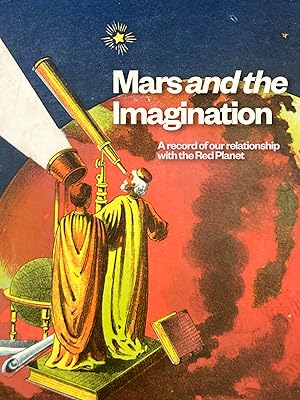
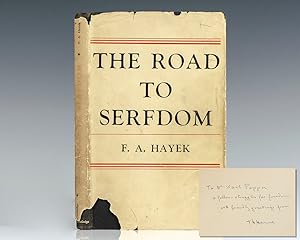
![Image du vendeur pour Green Hills of Africa [Presentation copy inscribed by Ernest Hemingway to his first wife Hadley Hemingway and his son Jack] mis en vente par Arundel Books](https://pictures.abebooks.com/inventory/md/md31674173319.jpg)

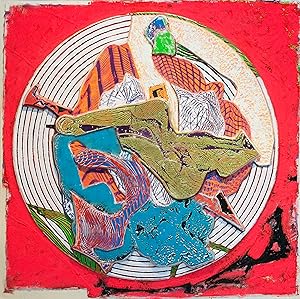
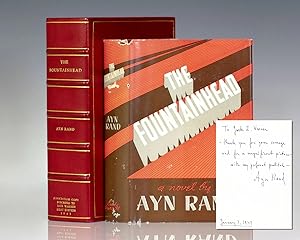
![Image du vendeur pour Somnium, seu opus posthumum de astronomia lunari. Divulgatum a Ludovico Kepplero filio. Sagan and Frankfurt: for the heirs of the author, 1634. [Bound with:] Ad epistolam . Jacobi Bartschii . praefixam Ephemeridi in annum 1629 responsio: De computatione et editione ephemeridum. Sagan [i.e., Görlitz?]: Typis Saganensibus, 1629. [Bound with:] Admonitio ad astronomos, rerumque coelestium studiosos, de raris mirisq (ue) anni 1631 . iterumq (ue) edita à Jacobo Bartschio. Frankfurt: Gottfried Tambach, 1630. [Bound with:] Chilias logarithmorum ad totidem numeros rotundos, praemissa demonstration legitima ortus logarithmorum eorumque usus . [- Supplementum]. Marburg: Caspar Chemlin, 1639/25. [Bound with:] De vero anno quo aeternus dei filius humanam naturam in utero benedictae virginis Mariae assumpsit. Prius Teutonica lingua edita, nunc ad exterorum petitionem in Latinam linguam translata; & responsionibus ad obiecta Sethi Calvisii nuperrima locupletata . Frankfurt: Johann Bringer, 1614. [Bou mis en vente par SOPHIA RARE BOOKS](https://pictures.abebooks.com/inventory/md/md30939727384.jpg)
